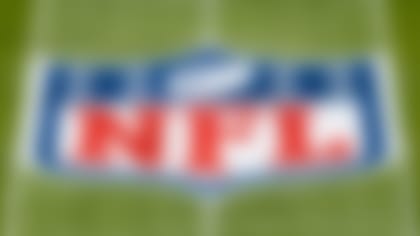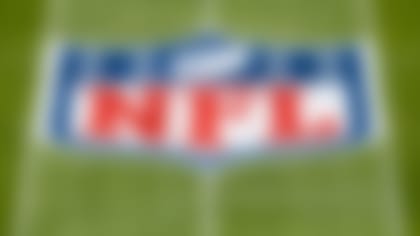Transcript of Health and Safety Conference with Jeff Miller, Dr. Jeff Crandall and Joe Lockhart - 3/28/17
(from nflcommunications.com)
Jeff Miller: Concussions, which were down over all about ten percent this year, if you include pre-season and regular season, were down about 8.7 percent in regular season games which is another metric that we keep. We look closely too at major knee injuries – ACLs and MCLs – those were relatively flat year-over-year and certainly in keeping with five-year averages. We talk about Thursday night games which there is always discussion around injuries on Thursday night games again this year were lower than they were on Sunday and Monday games, which is a number of years in a row now that that's been the case.
The other major topic was the kickoff which I know you've probably heard some about, with the number of kickoff returns down this year as a result of that rule change and therefore fewer exposures – in scientific terminology – to some of the injuries have come on the kickoff. We covered that, we talked for a while about some of the innovation work we are doing, our innovation agenda. We discussed some of the helmet testing, some of the shoe testing on foot and ankle injuries. We talked a little bit about what is going to be coming in the next year.
As you know, we announced last September the Play Smart. Play Safe initiative, which was about a $100 million investment in medical research in biomechanical engineering, about $60 million of that to biomechanical engineering, and Dr. Crandall here, is the chief engineer on that. The theme, the goal of that work, is to create an environment where there is better protective equipment created, not by the league, rather that we are going to encourage innovation in biomechanical engineering, in material science, as we advance some of the understanding of what happens on the field around some of the impacts and drive the sort of data and information and science forward so that engineers like Dr. Crandall can address those.
Once you understand how to measure certain things, you can fix them. We gave them an update on the first six, seven, eight, nine months of that work and Dr. Crandall can go into that with you as well.
Lastly, I think it's important to say just thematically, throughout our conversations over the last couple days there has been discussions of health and safety in our sport. Not just in my presentation. As you know, the competition committee met today and made some rules changes along those lines too. While I don't remember the exact number we are probably closing in on 45 or 50 rules changes. Close to 50 rules changes now in the last 15 years related to health and safety. Certainly Rich McKay and Dean Blandino can talk to you about those with much greater appreciation than I can. The players' association was interested in the defensive player jumping over the line, I know that got a lot of attention. There were some others too.
I think it was interesting to mention on that point the amount of work that we've done with the players' association on these topics. I think I mentioned at our press call before Super Bowl where I talked about the injury data that we would be going to combine and looking at that information in greater specificity with the players' association which we did. We spent a week both on engineering but also on injury data with all our medical committees. It's a nice collaborative relationship with the players and their interests of course. Protecting the health and safety of the athletes, we share with them 100 percent. The work that Jeff will describe for you in a second, their appointed engineers are participant in all aspects of it. Their medical officials work with our medical officials. That's been a good productive relationship. Getting back to the last point, we've heard a lot of health and safety talk in the room over the last couple of days. A lot of the discussion points to how we can do things better, how we can continue to push the innovation that we've started and started to see a little bit of benefit from just in the last several months.
Jeff, if you want to give a little bit of specifics on some of the engineering work and where we are so we can bring some folks up to speed.
Dr. Crandall: Jeff mentioned this engineering roadmap, and what that is, is a comprehensive and dedicated plan where we are trying to create innovation, and we are trying to significantly improve head protection for NFL players in three-five years. It's an injury-prevention strategy that is based on and takes a lot from practices that have been successful in automobile safety. We have four basic tracks within the road map.
Our first track is to measure and characterize the on-field environment. We want to study all the plays under which players are getting concussed. We want to know the frequency, type and severity of impacts that lead to concussion.
The second thing we do is once we've characterized those plays is we want to bring them into a laboratory and be able to study them. We create tests, including a helmet-to-helmet test, we'll create helmet-to-shoulder, and helmet-to-body test that look at the detailed scientific motions, forces, and velocities, that create injuries under those different scenarios. Then, in addition to experimental testing, we want to do computational simulation work.
If you look at what happens in automobile safety, the way that they design a vehicle now is very different from how they did it 30, 40 years ago, simulations are done before you have ever done an experiment, so you can run through many different iterations of design, and see which ones are effective. The other thing we have is an education, an outreach program, where, as soon as we get a significant finding from this roadmap, we meet with helmet manufacturers, innovators, designers, entrepreneurs and share the findings.
The other thing we do in addition to just educational is we have a head health tech challenge program, where we really want to stimulate the marketplace, and incentivize innovation. The idea is that we educate and show what the problems are, what needs to be addressed, then we actually provide funding and test protocols that people can design to improve the health protection.
We have two major off ramps from the road map. One is, we hope within a three-year period that all of this research and data will enable the development of a better general all-purpose helmet. Then longer term, we think there are tremendous opportunities for a position specific helmet. If you look there are position specific cleats, position specific shoulder pads, and we know that players in different positions receive different types, severity, and frequency of impacts, so we think that a position-specific helmet makes sense. I mentioned in the first track that we've been trying to characterize the environment of how players are injured, we've looked at over 300 concussive plays from the past two years, and we've tried to characterize them. One of the things that we've looked at is, what is the impact source, is it a helmet-to-helmet? Is it a helmet-to-body? Or is it a helmet-to-ground?
We found a couple of things. Roughly one-third of all concussions are caused by a helmet-to-helmet impact. About one-fifth or 20 percent are helmet to ground. Nearly half are helmet-to-body. If you look at this, we can compare it to some comparable data that was collected 15-20 years ago and we start to see a shift in the demographics of how concussions are occurring. What we see is that there has been roughly a 40 percent reduction in the number of helmet-to-helmet concussions that have occurred, so there has been a large drop in those. There has been an increase in helmet-to-shoulder caused concussions. What we've seen is definitely some of the rule changes and behavior have definitely limited or reduced the number of helmet-to-helmet collisions, so we've seen it effective.
The other thing I mentioned was these annual evaluations that we do. We get in a laboratory, we bring all new models of helmets in, and we perform testing. We do this in conjunction with the players' association. We put out a helmet poster every year, we put out an educational video, we meet with equipment managers. All of the folks that would try and talk to players about the safety of helmets and we try to give them the best available information. If you look at this paradigm that we've talked about at driving information and providing the tests and making the posters, we've seen that this has been fairly successful. We now have three of our top four helmets this year are new 2017 helmets. One of those is actually the VICIS helmet, which many of you may have heard of, it came out of one of the head health challenge programs that the NFL along with GE and Under Armour funded. Basically what that is, is a different type of helmet, it has a more deformable shell, an outer shell. What we've seen is that by innovations that can be realized, we can break away from traditional designs, and create better performing helmets. We'd like to capitalize on more of those innovations. Longer term, I said that we wanted to look at position-specific helmets. In order to get enough information to do that on all the different positions, we have to capture a lot of information on the head motions that occur both when players are injured and when they are not injured in plays. We're looking at developing sensors that would go on the player's head that would actually capture both the linear and rotational motions that occur during impact.
That brings you up to speed on the engineering road map and our progress and where we are going. I want to mention some other activities that are ongoing that involve engineering and the league.
There is a lot of work going on in the muscular-skeleton and foot and ankle committees. Similar to what we do for helmets, there is an annual evaluation of cleats, both from the standpoint of flexion of the cleat, to protect injuries like turf toe and lisfranc. All the cleats that come out are tested annually. Also there is a cleat-to-turf evaluation to see how much traction there is under linear and rotational motion. If you look at that, that also has a poster that goes up, there's an educational video down there as well. One of the things we've seen is innovation in the cleat design and the flexion properties of shoes. Now what we are working on is, because the shoes are being altered to do well in tests and protect the athletes, we need to make sure the athletes are wearing the right size shoes, the right shape shoes. What we're working on this year, is there will be an offering to work with teams where we will bring laser scanners into the locker room, they will scan the feet, they will look at the shoes in terms of the types of shoes for that position as well as the shape that fits that foot. Our hope is that we'll get optimized performance in terms of safety, as well as performance for the athletes out of that fitting procedure.
Jeff Miller: Just as context on the shoes, the reason we spend a lot of time on it is because lower extremity issues for our players, foot ankle, knee, somewhere in the neighborhood, approximately 60 percent of injuries for our players are lower extremity injuries. While some people may look at it like, 'ok you're just working with shoes and cleats.' It's not that, it's really a piece of protective equipment. A player who suffers a high-ankle sprain, who suffers a turf toe, who suffers a lisfranc injury is missing several weeks of the season. If there is a way to optimize the protective benefits of the cleats and working with the shoe manufacturers to do that we're going to have significant savings in terms of injury prevention over the course of time. To us it's an important issue.
Can you see someone bringing illegal cleats into say the combine to run the 40? Do you have an issue with having this?
Dr. Crandall: I think the combine shoes that someone would run a 40 in is a different cleat a different purpose. We are talking more about things that would be worn in game, in practice, when they are in the NFL.
When will the laser process be? Not before games?
Dr. Crandall: The idea would be that we would know the shoes that are going to be offered by the different companies, Nike, Under Armour, Adidas, and their shoes would be scanned and characterized in terms of the shape before the season. Then when a player would come in prior to training camp, OTAs, there'd be a scan and a fitting done.
So you said there's a reduction in helmet to helmet collisions, did you mean a reduction in helmet-to-helmet injuries?
Dr. Crandall: Yes, it's in concussion causing impacts. The percentage of concussions that are caused helmet-to-helmet is reduced by about 40% from where it was 20 years ago.
But is there also a reduction in helmet-to-helmet contact?
Dr. Crandall: Yes. So we have not looked at that specifically. So you could make some inferences but we haven't looked at it.
Joe Lockhart: There was some discussion in the competition committee this morning, and you can ask Rich McKay about it later today. But he referenced that they had noticed in looking at film less helmet-to-helmet hits, indicating that the rules and points of emphasis, have been manifesting on the field.
Jeff Miller: The focus for us is looking at the hits that are causing concussions, so we can make an evaluation of them. The broader issue that Joe raises around how the game is being played is important, but it's not as focused of an examination as we're doing to try to figure out what's going on with the head or the helmet at the time of the concussion may be caused.
You also said the number of percentage of helmet-to-body concussions are up, now what concern does that raise?
Dr. Crandall: So what that implies is that there is a shifting of the level of impact that's going and they are not targeting the head as much on the injury-causing plays, and we're starting to get more impact from the helmet-to-body in particular, in particular head-to-shoulder, is about 23% of all concussions. So we look at this and say there is a change in behavior, and the question is now what can we do about it. We have not had a test with helmet-to-helmet, helmet-to-shoulder, but we're looking at what a test might look at. And really, there's two possibilities there. How would you change the helmet, but the other possibility is what could you do with shoulder pads? Shoulder pads are traditionally thought of as self-protection, but is there a role there for partner's protections?
That seems to be logical because if they're avoiding the helmet, the next thing they hit is the shoulder.
Dr. Crandall: Exactly.
Jeff Miller: We know too more position by position. Jeff mentioned the potential outgrowth of this entire project is having a better appreciation for what each player is dealing with at his particular position. We know now where the sorts of impacts offensive linemen are seeing, the sorts of impacts cornerbacks are seeing, based on the analysis that we're doing here, which is going to help drive towards that eventual goal.
In measuring concussions, I know how different policies have played out, what do you know now in terms of statistics, with the return to play periods that exist and how has that changed over the last few years.
Jeff Miller: Yes, that's something that we measure through our shared data with the Players' Association to track not just injuries but also in this case return. As many of you know, when a player has suffered a concussion, there's a very strict return to participation protocol, which involves a series of steps, involves sign off by an independent doctor who's appointed by both us and the players' association jointly. But to get to your question, exactly, we've seen an increase in the number of days between the injury and the return from play, so I think this year, I'll get the stat for you exactly, I think that we are up to nine plus days, might even be 10 between date of injury and return to practice. So it's well more than a week at this point.
On average?
Jeff Miller: Yes, that's on average.
Didn't you say a year or two ago that it was four or five?
Jeff Miller: It's jumped in the last few years from six over to seven, eight, and I think we're up to about nine now, but again let me get you the exact number.
Last time I checked it was like eight, that was a year ago.
Jeff Miller: Yes, we've gotten to the point where it's past a week, and now it continues to increase.
What about total games missed by all injuries? What are you seeing, do you compile every team, every game missed so you can have a number of how many man power games are missed by each team and how has that changed?
Jeff Miller: Yes, athletic trainers input any injury whether they lead to a practice loss, game loss, or not at all. So any player who has suffered something is visiting with the athletic trainer or team doctor as a result of some injury, that goes into the system. So we have a very comprehensive data base. We don't really think in terms of total injuries in that regard in terms of the amount of time lost. It's really more sort of more specific issues that we end up drilling down on. I imagine that we could probably do a top-level number if we needed to, but we want to spend more time focusing on, and engaging with the competition committee on, here are the trends we're seeing in these injuries as a result of these sorts of plays, or injuries to this bodily part, and then what the competition committee then engages with that data and does something about it as opposed to looking at it that way. Although that data is available to us if we compile it.
You mentioned foot flexion, lisfranc, cleat to turf contact, do you measure the difference in turf? You have field turf, natural turf.
Jeff Miller: There are six different artificial turf systems used around the league, and 12 or 13 artificial turf fields around the league. So there's a lot of displacement, there isn't any one that has that many markets. It is an issue that we're going to be looking at more closely going forward though. There's a lot of questions that go into an artificial turf system that makes that analysis a little more complicated. For example, an artificial turf system in a cold weather city in November and December may react differently from one in a warm weather city. Indoors versus outdoors, how old that system may be, how much infill is in it, and in fact on that point, we've worked with the players' association, to have what is in essence, sort of a turf committee to take a look and make sure that all of the systems are at the right level in terms of infill and durability and those sorts of things, to make sure that the measure comes out right. There is more there. The turf manufacturers do work on the fields and you get new models regularly, so it's hard to track that specifically, so you may want to answer a little bit of this, but the analysis is really complicated.
Joe Lockhart: One of the things we're trying to do is, the league can't engineer or create these products, but we can go out and try to stimulate the market. One of the ones we highlighted was Viconic.
Jeff Miller: As part of the relationship with GE, one of the companies that submitted and won a grand prize from us, created a turf underlayment. So with an artificial turf system, you would put this underneath. It is an automobile safety company out of Detroit, that has a material that's in most of your cars, you don't see it, it's there in case of an accident. What they did with the money in the challenge that we ran is they took that system and they modified it, so they thought it would be appropriate for an artificial field to put under it to cushion the blow at the end of the day. So, it's in its final stages of testing now at the University of Tennessee. Whether or not it does that, and all signs point to a positive reaction in that regard. So, whether it be the helmet or shoulder pads, or even the turf systems, our argument is that there's room for improvement in all of those places with the right framework to address and create some level of innovation. Now not all of these things are going to work, but when companies that are in other lines of business adapt technologies for these purposes and see an opening and an opportunity to create something better, that's gratifying to see that stuff work. And I think we'll see more of that in the next few years.
Dr. Crandall: To add one thing to that, I think if you look maybe three or four years ago, the league actually implemented recommended practices for turf, both natural and artificial. So what they looked at was, if it is a field, how much variation do you allow across it, what is the stiffness or hardness that you allow. That became quickly actually a standard within the ASTM, which is the society standard, based on what the NFL had done for a recommended practice. So they have put a fair amount of attention into that maintenance,
And the infill.
Dr. Crandall: Exactly, the thickness of the infill. Tolerances on that, they went to the manufacturers, specified what was allowed for variation. So there has been a lot of activity in that area.
On Thursday night games, you mentioned injuries in those games. Do you all have a way, or do you track recovery or players from the previous game to Thursday night in whatever condition they are or are not in when that game starts?
Jeff Miller: No, we have participation data. The injury data I reference is simply based on injuries reported, as I mentioned before, time loss injuries, even non-time loss injuries, but in this case time-loss injuries, so that would force them to miss a practice or game. What we've seen is, in Thursday night games, there's certainly no higher incidents compared to Sunday and Monday; in fact it's been lower. But it's worth mentioning, by the way, that you know there's only one Thursday night game a week. So, the sample sizes are small, but we've seen it now over four or five years that those trends are stable.
Is there even a way to measure the physical recovery over that time?
Jeff Miller: We look at the duration of games, not just Sunday to Thursday, but Sunday on bye weeks, Sunday to the following Monday, so all of those different measures. Which gets a little bit closer to the question you're asking. But I think ultimately you're asking questions about when is a player feeling better, and the way we have to measure that is whether or not he's practicing.
How could you account for lower stats on the Thursday than the Sunday?
Jeff Miller: I don't have an explanation for it, I think we just look at the epidemiology and that's what the answers are.
Joe Lockhart: Just to be clear I don't think we're trying to make the point that somehow Thursday night there's somehow something unique about it, but there has been some discussion and anecdotal discussion and chatter that you know, it's more prone to injury than not.
Jeff Miller: We haven't seen it.
Joe Lockhart: The numbers don't support that.
If you could check the rate of players who are ruled out for Thursday night games, in other words if guys don't have enough recovery time, they might be ruled out more often in Thursday games, must be less risk.
Jeff Miller: It's not something that works its way into the electronic medical records, and therefore into the surveillance system.
You mentioned helmet censors. Have you started experimenting with that at all in past years?
Jeff Miller: There were censors in past years that were on a couple of teams for a certain number of games. This was done in conjunction with the players' association. The outcome of the data was published, we could get you the scientific publication. It turned out that the accuracy, in terms of both the magnitude and direction of the hit really wasn't as good as we wanted it to be. And so what I think Jeff is talking about, not to put words in his mouth, but after canvasing all of the censors that are out there to do this sort of specific data collection we need, we just didn't find one that suits our purposes and so we're going to work with a company or companies, and with the players' association, who's an equal partner in this, to actually develop the sort of censor who would actually do what we need it to do. It's going to take a little while, you know, will be another whatever amount of time before we were able to talk about putting those on players.
Dr. Crandall: And that was the conclusion. I wasn't involved with the prior study, but that, in essence, what the findings were, I think as Jeff mentioned, there were issues in particular for the rotational motions that many folks think are important for an injury mechanism for a concussion. Those were limited, as were, you couldn't characterize the sort of direction of the impact accurately, and so we've looked, our focus is a little bit different. If you look at a lot of the systems that are out there, commercially, a lot of them are looking to sort of do immediate diagnostics, and was this players potentially injured or not injured, and what we're using censors for is really to gather information on sort of the environment that players are experiencing so we can develop tests, and then manufacturers can design to those tests. So, we don't need that real-time assessment. But we need very high accuracy. And so we're coming up with sort of a new line of censors that we'll put on players hopefully, in conjunction with the players' association.
And we're talking years down the line here?
Jeff Miller: No, not years.
Dr. Crandall: So, we're looking at having a prototype done next year, 2018, that would be used on athletes at some level. We'll obviously, before we put it on an NFL player, we'll go through a lot of preliminary evaluations and checks to make sure we don't have issues on accuracy, and player acceptance. Obviously, it has to be small and lightweight and not sort of encumber or hinder breathing or talking or hearing. Our target is 2019 actually for having it on field.
What about, you said long term for the positional helmets, is there any way to narrow that down?
Dr. Crandall: Yes, sure, so our target is to have all of the data available and released to manufacturers, and designers and entrepreneurs in about the 2020 timeframe. So long term is sort of a four-to-five year time frame.
How close is the science to diagnosing concussions, blood tests, saliva tests, something that's quicker and more objective?
Jeff Miller: We've invested in diagnostics as part of our relationship with GE over the last few years. Let me tell you a little bit about what we found. Diagnosis of concussions is still subjective, there's not an objective test. We know that to be the case, and it's one of the reasons that we have the unaffiliated doctors on the sideline working with our team physician, so you have another set of specialists examining a player for the symptoms that might appear. But getting back to the GE part, we gave grants with GE to a number of different companies. Some were blood tests, some were some versions of an EEG device, a company called Brainscope, a company called Quanterix, which are going through the process of getting FDA approval to be accepted technologies in the medical spaces. And then there's a separate question which is: if they can in fact diagnose a concussion, can they do it in real time? Which is what you would need. I don't know the science that well, except to say they're not there yet. I think that there's a lot of people working on this – I can try and identify whatever that biomarker is that can identify a concussion. They're making progress, but it's hard work and they're not there. In addition, the work we did with GE has led to a better diagnostic device like a scanner, like an MR machine, which has a better way to examine what's going on in the brain. They're working on getting that machine to market this year, so it's part of an investment primarily from them, but partly an investment from us too. Something like that will help researchers take a look at the brain not just after it's diagnosed, but how it's recovering, and once you have more specifics around recovery for example, when those issues have resolved, that's obviously better for public health. So I think you're going to see tools like that being used for research and you're going to begin to see the research advance to the point we'll get to where we're going. It's just not an overnight process.
Joe Lockhart: We have a website Play Smart, Play Safe that has a lot of this information on it, and is actually a good resource on anything. If there's anything you want more on, it's a good place to start.
Doctor, you mentioned something like three of four helmet types used this year are new, did I hear that correctly?
Dr. Crandall: No. Every year when new helmets are introduced we do an evaluation, and anything that's used
Jeff Miller: In the laboratory.
Dr. Crandall: In the laboratory, yes. Anything that's still used on the field we retain on a poster. So as new helmets come on, we will add those to the poster and they'll be sort of ranked in order and what I mentioned was that three of the top four helmets in the ranking were actually introduced in 2017.
Joe Lockhart: One of the points that we've made is that over the last decade and probably beyond that further, there wasn't a lot of innovation in the helmet industry. One of the effects of what we've done is to stimulate the traditional helmet companies to do more, and to make their helmets better models, and we see that qualitatively and quantitatively this year in the rankings, because of the three, two are traditional helmet companies.
Jeff Miller: We share all of our data and engineering road map with the helmet companies. Jeff has met with them several times over the course of the year. If they can benefit from the research that we're doing, and it infuses the next model of their helmet, that's fantastic. We're not going to build something, somebody's going to build something. It could be a new company like Vicis, it could be you know an entrepreneur, it could be the incumbents. That's all great from our perspective. The other thing that I think is worth reiterating is this notion around this new helmet – this company called Vicis – is that we had, Jeff is a biomechanical engineer as well as many others who we consulted with, all have a similar conclusion. When we surveyed them, which was the piece of protective equipment the helmet had, could be advanced significantly, over a relatively modest period of time. And the fact that invested with GE, some relatively modest amount of money in Vicis, we don't own Vicis, it's an independent company. They proved that they could actually make a better helmet with a different design, sort of validated that. Now, that's the first. There will hopefully be many more based on data and other things that we're going to share broadly in the marketplace. But it was interesting validation of our theory that in fact you could make this better.
Joe Lockhart: The fact that we share this and we don't try and keep the intellectual property is very important in the marketplace. So if you're an engineer, and you're trying to decide where can I go do serious work but also make some money doing it, this is a perfect place, because you know if there are big innovations in any of these fields, someone's going to be able to manufacturer that and do it well. It's our view that we want to neutralize, we don't want to own it because we think that drives the smartest people, the most gifted entrepreneurs, to actually come in and actually increase the speed of innovation, rather than trying to do it ourselves.
Jeff Miller: We say that publicly that we're not going to own the intellectual property in any of this, that's up to the inventor, they get to keep all that.
Do you have a theory on what an offensive line helmet would look like compared to a cornerback helmet?
Dr. Crandall: No, we don't have enough data from our findings, and I've told you that some of the censors that are out there have flaws. But what that would suggest is that linemen receive more low severity impacts to the front part of the head than other positions. So higher frequency but lower severity. Whereas some of the speed players that would be in the open field, would sustain lower number of impacts but higher severity. So what you might envision is rather than getting into specific positions, what you might envision is that if a player was hit very frequently in one location, and we knew what the severity, what the speed of the impact was, what the force is, you could sort of optimize performance in that area. You could put more padding there, less in another place if they weren't as frequently impacted. That's the idea. Obviously, we really need to collect the data to support that, but I think you can see how that would lend itself to that design.
When you say severity, do you necessarily mean velocity?
Dr. Crandall: When we look at severity, there are a couple things we look at. We look at change in the velocity of the head, which would be either linear or rotational. We also look at accelerations, so both linear and angular. It's not just the velocity coming in, but it is what the velocity change of the head actually is. If someone comes in at a high velocity, but is just a glancing blow and not a lot of energy or momentum gets transferred to the head, then that is not as significant as if you come in and it's a direct line, transferring a lot of energy to the head.
On the concussion protocol in the off-season …
Jeff Miller: The same player would have to be cleared by a team doctor and the independent doctor before he was able to resume practice and play in contact. You would work your way through those steps. Part of the return-to-play protocol is being active and working out, to see if those symptoms re-occur once you are working at exertion, but before a player is allowed to participate in a contact practice you would have to have those clearances.
On long stints in the protocol …
Jeff Miller: The team doctor, with the respective team and their specialists, are the people who are going to care for that player. That is something the league doesn't drive. The best clinical care is going to be dedicated by the doctor working with that medical staff in the community. That player is going to get that care and that is exactly the way the system should work, just like a patient would get the care from their doctor over the course of their injury.
Has there been research on whether to wear a helmet at all?
Jeff Miller: We have had a couple of international sports concussion think tanks with other sport leagues – like rugby, Australian-rules football, equestrian, hockey – all of those are significant contact sports. The data, as I understand it, from some of the non-helmeted sports would not suggest that we take the helmets off the players. That is not based off of a humongous scientific study that I am offering you, but those sports that have significant contact also have significant injuries.












